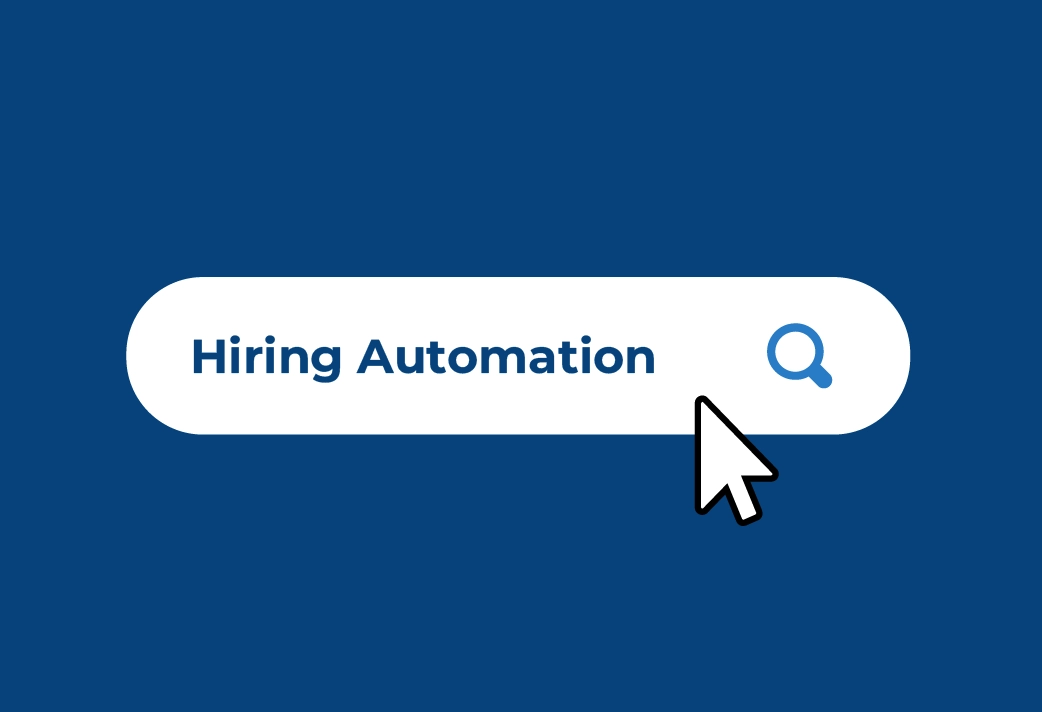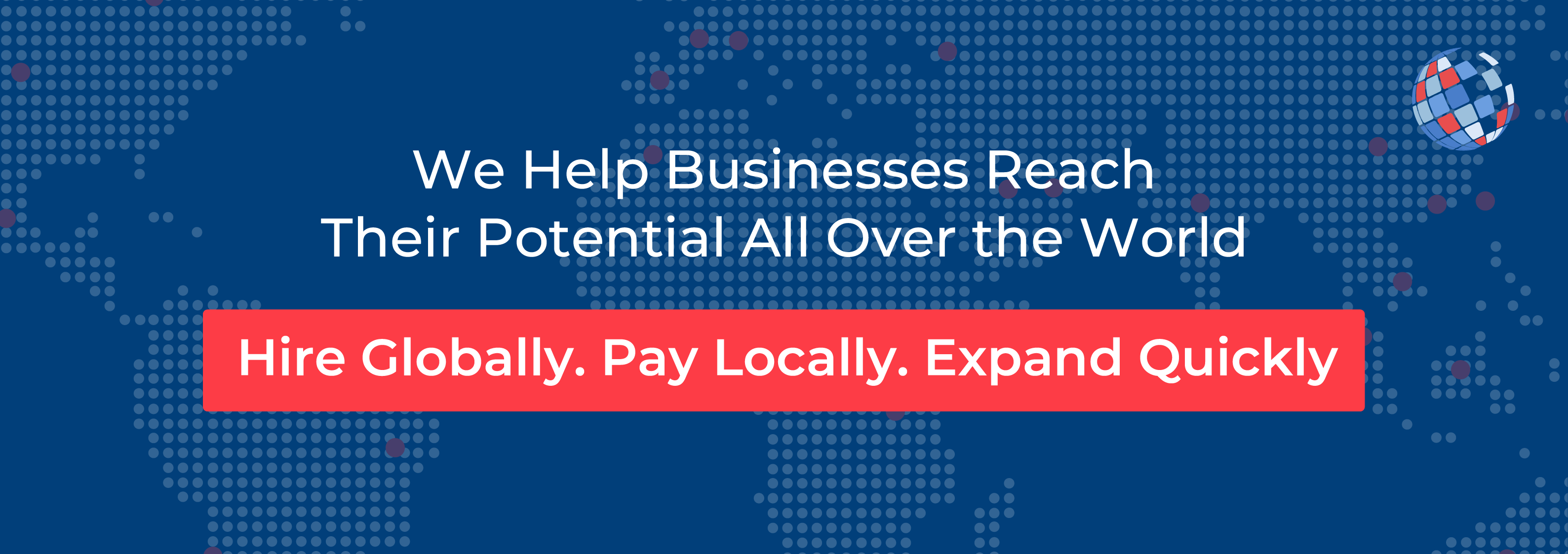Why Companies Are Choosing Hiring Automation
According to one study by the PwC, hiring process times of more than 1 month are seen as a key factor in candidate dissatisfaction and disengagement. As many as 67% of respondents claimed that this kind of dragged-out hiring process is the biggest problem they have with hiring in general, and with global hiring bringing increasing numbers of workers into a single unified talent pool, the clock is ticking when it comes to beating other potential employers to the dotted line. That’s why, in today’s competitive job market, speed, accuracy, and experience are everything.
Employers are under pressure to fill roles faster while competing for top talent, so in response, more organizations are turning to hiring automation or the strategic use of technology to reduce manual labor in recruitment and create a smarter, faster process.
Reducing time-to-hire and recruitment costs
It’s said that time kills deals, and this includes deals made with hiring candidates. The number of applications per post is now reaching new heights around the world, with hundreds of CVs being submitted for any role. In the UK, as an example, the number of applications per job has increased by as much as 60% year on year. As a result, in high-growth environments in particular, traditional hiring workflows simply can’t keep up anymore, so automating tasks like resume screening, scheduling, and outreach is increasingly seen to help businesses reduce time-to-hire while minimizing administrative overhead.
Companies that automate their hiring process often cut recruitment costs, streamline talent acquisition, and eliminate time wasted on unqualified leads. In particular, tools powered by AI and machine learning can identify better fits earlier, reducing turnover and improving retention.
Improving candidate experience and consistency
The modern job seeker expects seamless interactions and instant updates. Automated recruiting systems ensure candidates receive simple yet timely responses, quick status updates, and consistent evaluations throughout the process.
This can not only enhance the experience but also reflect positively on the employer brand if used wisely.
Scaling recruitment for high-growth companies
Startups and multinational enterprises alike need to be able to scale recruitment without sacrificing quality in order to meet increased demand. When hiring hundreds or thousands of employees across locations, manual methods collapse under pressure, so recruitment automation tools make it possible to replicate high-quality processes at scale, ensuring that standards remain high even as hiring volume increases.
However, companies expanding internationally in particular need to ensure their hiring processes remain compliant, efficient, and competitive in a variety of legal labor jurisdictions. That’s why integrating recruitment automation with expert-backed services helps businesses hire smarter and faster in any market.
What This Guide Covers
- The stages of hiring automation from sourcing to onboarding – This guide walks through each stage of the hiring automation process, from sourcing candidates to onboarding new hires. You’ll see where automation creates the most impact and where human involvement still matters.
- Key tools and platforms used in automated hiring – We’ll explore the most common and effective recruitment automation tools, including applicant tracking systems (ATS), AI sourcing engines, and onboarding platforms that eliminate manual paperwork.
- Benefits, limitations, and best practices – We’ll also dive into the pros and cons of AI in the hiring process, how to avoid common mistakes, and how to implement automation in a way that enhances rather than replaces human decision-making.
What Is Hiring Automation?
Definition and Purpose
At its core, hiring automation refers to the use of software and AI-driven tools to carry out tasks within the recruitment pipeline in response to the growing need for speed, scalability, and precision in talent acquisition.
Using technology to streamline repetitive recruiting tasks
Tasks such as posting job ads, filtering resumes, or sending interview invites don’t always require strategic decision-making. So, automating these steps frees HR teams to focus on building relationships with key candidates and making final decisions.
From screening algorithms to onboarding workflows, recruitment automation tools that take care of time-consuming or repetitive tasks can reduce bottlenecks and eliminate errors caused by manual entry or inconsistent processes.
Replacing or assisting manual workflows
What is automated recruiting, really, though? Despite the common misconception, it’s not about replacing humans with robots. It’s about assisting human recruiters with intelligent tools that improve outcomes. For instance, rather than manually checking hundreds of resumes, a system can instantly filter candidates based on required skills, location, or experience and provide only the best or most suitable to human recruiters.
This synergy between automation and human oversight, therefore, leads to smarter, more scalable hiring operations.
Human vs. Automated Processes
What Tasks are Best Suited for Automation?
Certain recruiting tasks are ideal candidates for automation. These include:
- Posting job openings across multiple platforms
- Resume parsing and keyword filtering
- Pre-screening questionnaires
- Interview scheduling
- Background checks
- Onboarding workflows and documentation
These repetitive steps slow down hiring and are prone to human error. Automating them increases consistency and reduces the risk of missing out on qualified candidates due to delays.
Where is Human Oversight Still Essential?
For all of its benefits, automation isn’t a silver bullet. It’s something that’s essential to remember because some decisions require human judgment, intuition, and empathy. In fact, when the wrong parts of the process are automated or automation tools are over-relied on, the response companies get from candidates can be even more negative.
Final interviews, offer negotiations, and cultural fit assessments remain firmly in human hands. In general, companies must avoid over-automating or dehumanizing their recruitment process. A cold, mechanical experience can alienate strong candidates. The key is balance and using automation to handle volume, not to replace insight.
6 Steps of Hiring Automation: How Hiring Automation Works at Each Stage
1. Sourcing Candidates
Job ad distribution via automation platforms
Sourcing starts with visibility. Industry-level tools allow recruiters to post job listings on dozens of job boards, social media platforms, and career sites with one click. These platforms also then collect and summarize performance data so recruiters can see which sources bring in the best talent and adjust strategy accordingly.
While expensive and often difficult to get started with for non-industry hiring managers, this type of tool eliminates the need to manually post ads on individual sites, thereby saving not only setup time but the need to constantly check each site.
AI tools that scan databases or LinkedIn to find matches
Modern sourcing tools might also use AI in the hiring process to actively search for qualified candidates in publicly available databases. These tools scan public profiles, resumes, and talent databases to identify individuals who match job criteria, even if they haven’t applied.
These platforms aid headhunting or other more proactive hiring methods and often include predictive analytics that rank candidates based on their likelihood of responding, their fit with the role, and previous engagement history.
2. Screening and Filtering
Resume parsing and keyword matching
One of the most time-consuming tasks in recruitment is reviewing resumes, but hiring automation platforms can quickly parse resumes, extract key information, and match candidates to job requirements instantly.
They typically use natural language processing (NLP) to identify relevant skills, job titles, certifications, and experience levels, allowing recruiters to focus only on qualified applicants rather than sifting through hundreds of irrelevant submissions.
The issue with this is, however, that such tools are limited not only to a specific set of language prompts (meaning they may miss alternative spellings or versions of a keyword), but the reduction of candidates to the typically technical information contained in a CV will not be truly representative of their personality or working style.
Pre-screening questions and automated scoring
Customizable pre-screening questionnaires are another staple of automated screening, where applicants answer key questions upon applying, and their responses are scored automatically.
As an alternative to more detailed or traditional technical tests, there are quick ways to measure language fluency, technical knowledge, or work authorization, helping disqualify unfit candidates before the first interview.
This makes the overall hiring automation process more efficient and targeted, though users may find their scope limited and less suitable for testing advanced or people-based skills.
3. Interview Scheduling
Integrations with calendars to reduce back-and-forth
While interviewing is best left to human professionals, interview scheduling is another logistical challenge that automation can quickly streamline. Tools can integrate directly with recruiters’ calendars, letting candidates choose available slots without back-and-forth emails.
This significantly speeds up what is often the most lengthy stage, an especially valuable feature when hiring at scale or when you know recruitment staff are already busy.
Automated reminders and rescheduling tools
Once interviews are booked, automated systems can handle the rest, from sending confirmations to reminders. If a candidate cancels or reschedules, the system can even suggest adjustments automatically and send notifications.
This kind of tool reduces no-shows and improves the candidate experience, making the process smoother and more professional
4. Assessments and Testing
Automated coding tests, personality quizzes, and skill evaluations
Skills assessments are essential for verifying candidate qualifications. Today, automation makes it easy to evaluate applicants with minimal manual effort. As examples, platforms offer automated coding tests, personality assessments, and customized quizzes that align with job requirements.
These systems instantly score responses and rank candidates based on performance so recruiters can then focus only on those who pass predefined thresholds, drastically reducing the time needed to evaluate talent objectively and consistently.
This is particularly useful in high-volume hiring or technical roles where verifying skills through interviews alone isn’t feasible.
Platforms that auto-score and rank candidates
Automated ranking tools go beyond basic assessments. Using algorithms, these platforms weigh test results, resume data, and questionnaire responses to create composite scores. Candidates are then ranked in real time, offering a clear view of who is most qualified.
This method removes guesswork and brings objectivity to early-stage evaluations, two elements crucial for maintaining consistent and bias-resistant hiring practices across a growing organization.
5. Candidate Communication
Automated email flows and chatbot replies
Effective communication is a cornerstone of good recruitment, but manually responding to every inquiry or application isn’t scalable or always worth it.
Modern platforms use chatbots and automated email workflows to send personalized replies, status updates, and instructions at every stage of the process. From acknowledging receipt of an application to sending interview prep materials, automation ensures every candidate feels informed, though extra steps may need to be taken so candidates feel the communication to be natural and genuine and that they feel respected.
When used strategically, these tools also improve transparency and reduce candidate drop-off, especially in competitive industries where communication speed can influence decisions.
Status updates and feedback loops
Keeping candidates informed is key to maintaining a positive experience. Automation helps this by triggering real-time status updates, such as when a candidate moves to the next phase or is disqualified.
Systems can also be configured to send automated feedback, both generic and specific, depending on the stage of the process. This builds goodwill and promotes a professional employer brand even when candidates aren’t selected. However, automated follow-up may not be preferable for candidates who just missed the mark and may want to be contacted again later on.
6. Onboarding Automation
Document collection, e-signatures, and training workflows
Once a candidate is hired, the process shifts to onboarding, another area rich with automation potential. Platforms help new hires complete document submission, e-signature workflows, and compliance forms digitally.
Instead of manually collecting contracts, tax documents, or identification, HR teams can initiate a seamless onboarding journey triggered automatically upon hire confirmation, something especially critical for international teams, where compliance documents differ by country.
Setting up accounts, welcome kits, and task checklists
Automation also handles backend logistics. IT teams can automatically receive notifications to create user accounts, send welcome kits, or assign training modules through LMS integrations.
New hires are presented with structured checklists, video introductions, and policy documents, all tailored to their role and region.
These personalized touchpoints reduce confusion and increase engagement from day one.
Benefits of Hiring Automation
- Faster Time-to-Hire – Automation significantly reduces delays caused by manual coordination. Tasks that once took hours, like resume screening or interview scheduling, can instead be completed in seconds, and as a result, businesses reduce time-to-hire, improve agility, and secure top talent before competitors do.
- Improved Candidate Matching – By leveraging AI algorithms and data analysis, automated systems make smarter matches between candidates and job roles in new and exciting ways. Whether it’s ranking applicants or identifying hidden talent through predictive modeling, AI in the hiring process may see potential fits in ways that humans don’t.
- Reduced Human Bias in Early Stages – One of the most powerful benefits of hiring automation is its potential to remove bias. When used carefully, resume blinding, score-based evaluations, and consistent screening criteria help companies focus on qualifications rather than unconscious preferences (however, many questions remain to be answered regarding this point, so usage should come with caution).
- Better Candidate Experience and Transparency – Automated communication ensures candidates aren’t left in the dark as they receive timely updates, instructions, and feedback.
- Consistent Hiring Practices Across Teams – Whether your company hires in 5 cities or across 50 countries, automation ensures the process remains standardized. This creates a predictable, compliant hiring workflow, which is crucial for HR teams managing global operations.
Tools and Platforms That Power Hiring Automation
Applicant Tracking Systems (ATS)
ATS platforms are the backbone of most automated hiring systems. They centralize applications, track progress, and integrate with various tools for sourcing, interviewing, and onboarding. Examples include:
- Greenhouse
- Lever
- iCIMS
- Workable
These systems reduce manual oversight while offering complete visibility into the recruitment pipeline.
AI-Powered Tools for Sourcing and Screening
Screening tools use artificial intelligence to identify, engage, and evaluate candidates based on advanced algorithms. They’re especially useful for passive sourcing and eliminating bias in early screening stages.
These platforms are central to understanding how recruitment automation works in real-world hiring strategies.
Interview and Onboarding Automation Tools
From calendar integrations to onboarding platforms, automation now extends through the entire candidate lifecycle. These tools help HR teams scale, stay compliant, and ensure a smooth candidate transition into the team.
Challenges and Limitations
- Over-Automation and Candidate Alienation – Automating too much too early can make your hiring process feel cold and impersonal. Candidates want to know there’s a real person behind the process, so companies must balance automation with human connection to preserve authenticity.
- Inaccurate Screening or False Negatives – Algorithms aren’t perfect, and they may overlook great candidates due to rigid filters or flawed training data. It’s essential to regularly audit systems to ensure recruitment automation tools are enhancing, not harming, your hiring success.
- Legal and Ethical Considerations (e.g., AI bias) – Automation raises serious ethical questions. If AI tools are trained on biased data, they can perpetuate discrimination, so companies need to ensure transparency in how tools make decisions and remain compliant with labor and anti-discrimination laws globally.
However, even with these risks, the right support helps businesses navigate these complexities with compliance-first hiring solutions that align with legal standards in every region.
Best Practices for Implementing Hiring Automation
Combine Automation with a Human Touch
Use automation to handle volume and repetitive tasks, but make sure there’s always human interaction for interviews, offer negotiations, and sensitive communication. This balance ensures both efficiency and empathy, so candidates don’t think they’re being forgotten about.
Start Small and Scale Gradually
Implement automation in stages. Start with screening or scheduling, then expand to onboarding or assessments little by little. This approach reduces risk, identifies the most problematic areas that will benefit from further automation, and helps you tailor automation functions to your team’s needs.
Continuously Monitor and Optimize the Process
Track key metrics like time-to-hire, candidate satisfaction, and conversion rates with regular process audits to identify areas for improvement or recalibration.
Prioritize Candidate Experience at Every Stage
Always consider how automation affects the applicant. Streamlined processes should enhance their journey, not complicate it, so include feedback loops and touchpoints to ensure candidates feel heard and respected.
Scale Smarter. Hire Faster. Stay Compliant.
Companies that embrace hiring automation gain a significant edge in speed, quality, and scalability, but technology alone isn’t enough. Without expert guidance, automation can create compliance risks and alienate top talent, and that’s where INS Global comes in.
As a global leader in PEO, EOR, and international HR solutions in 160+ markets worldwide, INS Global helps companies build compliant, efficient, and tech-enabled hiring processes anywhere in the world.
From identifying the right automation tools to managing local labor practices, INS Global takes the complexity out of global hiring. Contact our expert advisors today to learn more.





SHARE